Dog Nail Grinder vs Clipper: Which Nail Trimming Tool Is Better?

Trimming your dog’s nails can be stressful for both of you. But it doesn’t have to be. With so many tools available today, the classic nail clipper now faces serious competition from the modern nail grinder. In this post, we’ll dig into the pros and cons of each, break down the “dog nail grinder vs clipper” debate, and help you decide which one is better for your pup.
This guide is worth reading because untrimmed nails can lead to pain, posture problems, or even serious health issues for your dog. Whether you’re new to pet grooming or looking to improve your trimming method, you’ll gain a complete understanding of the tools and techniques that lead to safer, more stress-free nail care, especially at home.
Why Is Nail Trimming Important for Dogs?

Trimming your dog’s nails is not just cosmetic—it’s essential for their overall health. Long nails can interfere with how a dog walks, cause joint stress, and even lead to injuries. The constant contact between the nail and the ground can force pressure into the nail bed and up the leg.
When nails grow too long, they can curl and dig into the paw pad, leading to pain and infections. That’s why consistent nail trims are crucial. Each dog’s nail is made of keratin and contains blood vessels and a nerve called the quick. Keeping nails at the proper length helps avoid health problems and supports good posture.
What Happens If You Don’t Trim Your Dog’s Nails?

Long nails don’t just look bad—they create pain. When a dog’s nail touches the ground constantly, it places stress on the toe joint, which over time can deform the foot and cause arthritis. Dogs with overgrown claws may slip on smooth floors, be less willing to play, or show signs of discomfort.
Neglecting nail trimming can also make future trims more difficult. The longer the nail, the longer the quick grows. This makes it harder to shorten the nail without hitting the quick, which can bleed and be painful. A proper nail trim helps avoid these complications.
What Are Dog Nail Clippers, and How Do They Work?
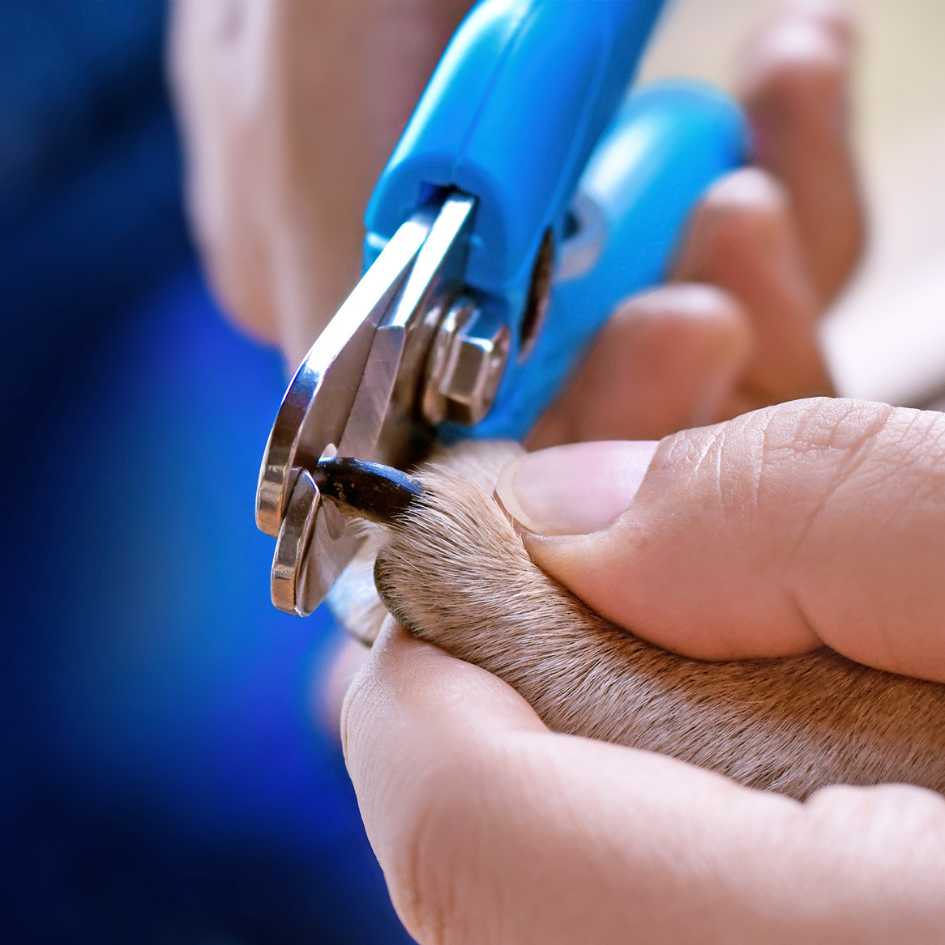
Dog nail clippers are traditional tools used to trim a dog’s nail in a single cut. They come in three main styles: scissor-type, guillotine-style, and electric clippers. Scissor clippers are ideal for larger dogs with thick nails, while guillotine clippers are easier for smaller breeds.
Nail clippers work by applying pressure to the claw and cutting through the keratin. It’s fast but can be risky. If you clip too far and hit the quick, it can cause the nail to bleed. Some nail clippers come with a safety guard to prevent this, but precision and confidence are still key.
What Is a Dog Nail Grinder, and Why Is It Gaining Popularity?

A nail grinder is a rotary tool that files down your dog’s nails instead of cutting them. Many dog owners prefer using a grinder because it allows for more gradual nail shortening and reduces the risk of injury. It works especially well for dogs with black nails, where the quick is hard to see.
Nail grinders use a sandpaper-like surface or grinding tool to grind the nail slowly. Brands like Dremel offer grinders that are ergonomic, quiet, and efficient. Grinding dog nails gives a smoother finish and eliminates sharp edges that clipping can leave behind.
Dog Nail Grinder vs Clipper: Which One Is Better?

The debate of dog nail grinder vs clipper boils down to control and safety. Clippers are fast and convenient, especially if your dog tolerates nail trims well. However, grinders offer more precision, making them ideal for nervous dogs or for those with dark claws.
If your pooch squirms or has anxiety, using a grinder may help because the process is less sudden and easier to manage. Plus, the ability to grind a little at a time can make the process more forgiving. One is better depends on your confidence and your dog’s comfort.
Are Grinders or Clippers Safer for Trimming Dog Nails?
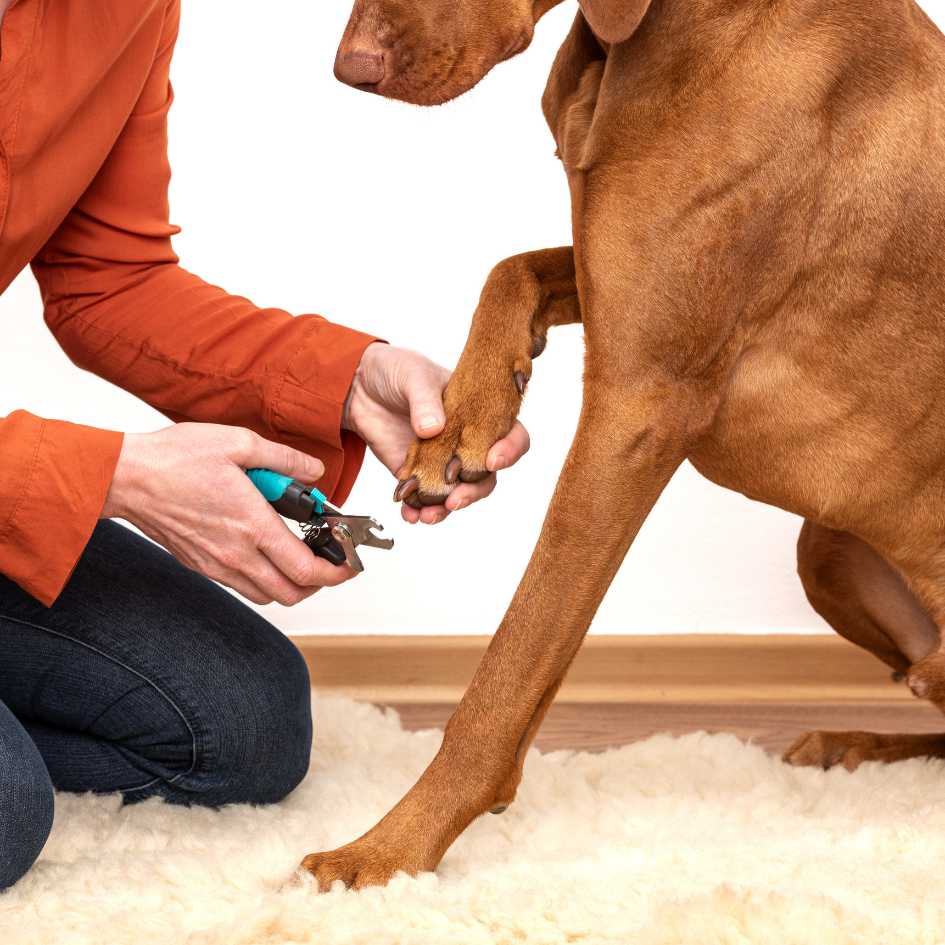
Both tools are safe when used correctly, but grinders and clippers each come with their risks. Clippers can cause immediate pain if you hit the quick, while grinders may cause friction or discomfort if used too long on one spot. Grinders also make vibration noise that might scare some pups.
The safest approach often combines the two: use clippers to shorten longer nails, then use a grinder to smooth the bottom of the nail. Always have styptic powder ready in case you make a mistake. When in doubt, consult a vet tech or professional groomer.
How Often Should You Trim or Grind Your Dog’s Nails?
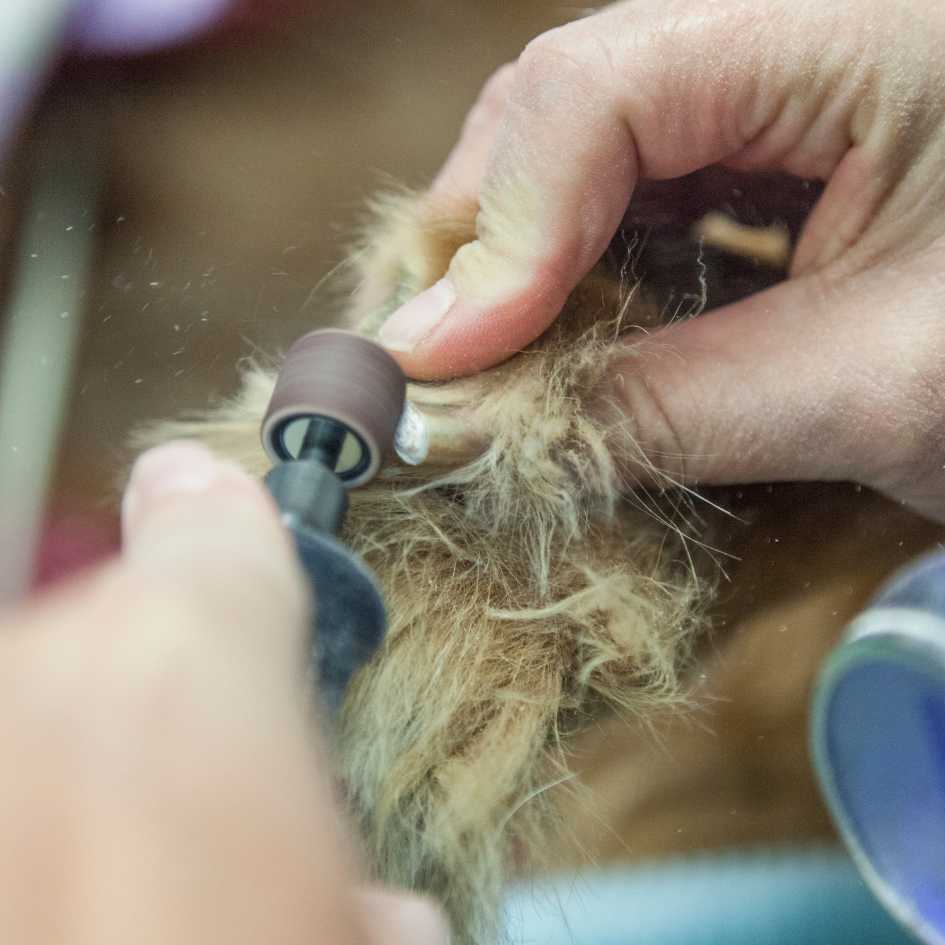
Most dogs need a nail trim every 3-4 weeks, but active dogs that walk on pavement may naturally file down their nails. Indoor dogs or older pets may need more frequent attention.
If you hear your dog’s nails clicking on the floor, it’s time for a trim. A good rule of thumb is that the nails shouldn’t touch the ground when your dog is standing. Trimming dog nails regularly will help keep the quick from growing out too far, making maintenance easier over time.
Can You Trim Black Nails Without Hitting the Quick?
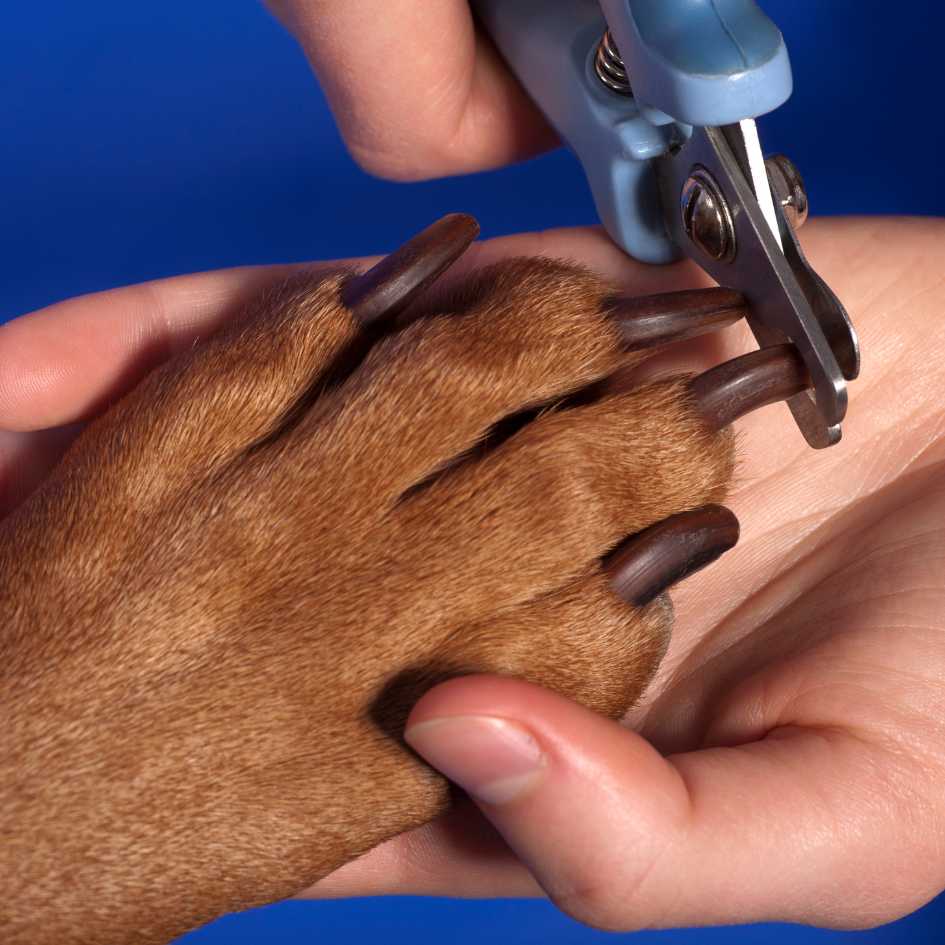
Trimming your dog’s nails becomes more challenging when your dog has black nails, as the quick is not visible. In this case, using a grinder allows you to take off tiny layers and stop when you see a small dark spot in the center of the nail—a sign you’re near the nerve.
If you’re clipping black nails, trim small amounts and check the center of the claw after each cut. Having styptic powder on hand is essential in case you cause a bleed. Always be cautious to avoid hitting blood vessels that run through the dog’s nail.
Tips for a Stress-Free Nail Trim at Home
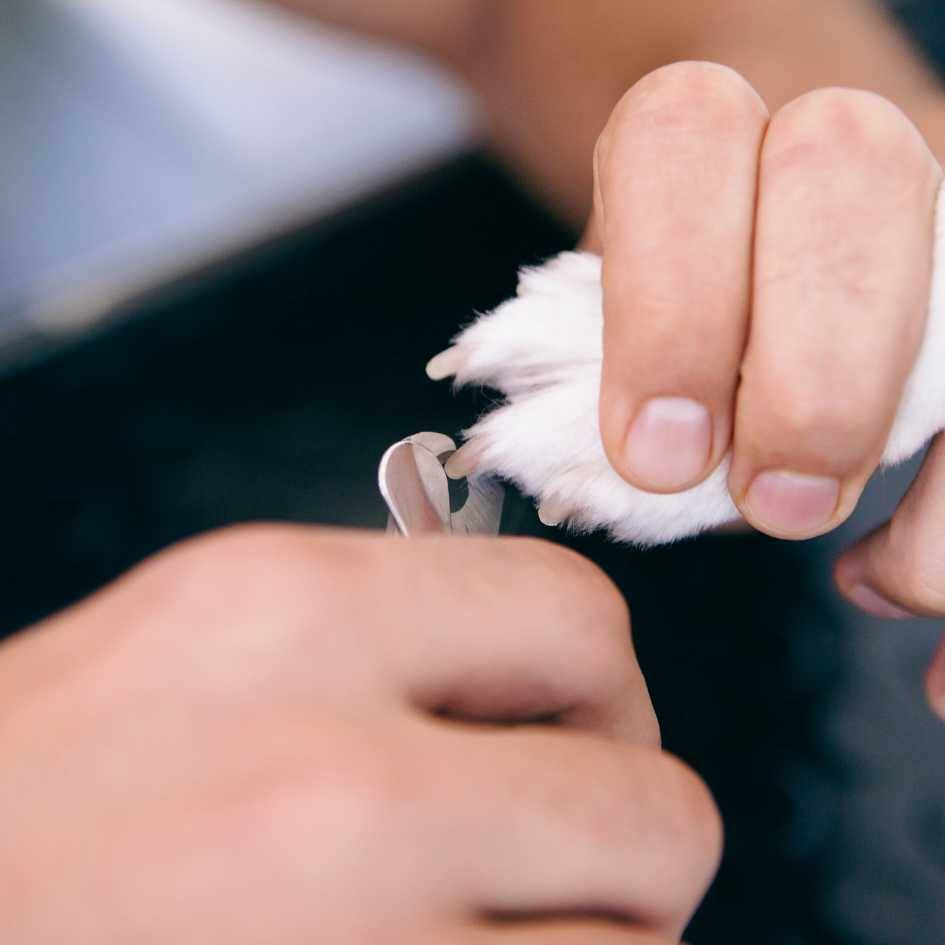
The key to at-home nail care is preparation and patience. Teaching your dog to tolerate nail trims begins with handling their paws regularly to desensitize them. Use treats and praise during and after each session to make it stress-free.
Start with short sessions and introduce the grinder gradually. Let your pup sniff the tool for dog nails, then turn it on to get them used to the vibration. Choose an ergonomic, quiet grinder for better comfort. Always take breaks and stop if your dog seems anxious or scared.
Final Verdict: Choosing the Right Tool for Your Dog’s Nails

In the end, choosing between a dog nail grinder vs clipper depends on your dog’s temperament, nail type, and your grooming experience. For thick, long nails or larger dogs, scissor-type clippers may offer the power needed. For black nails and anxious pets, a grinder provides safety and precision.
Many dog owners use a combination method of trimming—a quick cut with nail clippers, followed by filing with a grinder for that smoother finish. As long as you’re trimming your dog’s nails regularly and carefully, either tool can be the right one.
Key Takeaways: Nail Grinder vs Clipper

- Nail trimming is essential to prevent health problems like posture issues or infections.
- Nail clippers are fast but risk hitting the quick, especially on black nails.
- Grinders offer gradual filing, making them ideal for nervous dogs or tough claws.
- A nail grinder provides a smoother finish and reduces sharp edges.
- Regular trims every 3-4 weeks keep nails healthy and prevent overgrowth.
- Introduce tools gradually for a stress-free at-home experience.
- Always have styptic powder ready in case of bleed.
- Combine both tools for the safest and most effective nail care.
- Ask your vet or groomer for help if you’re unsure about the method of trimming.
- Every dog is different—choose the tool that best suits your pup’s needs.











































